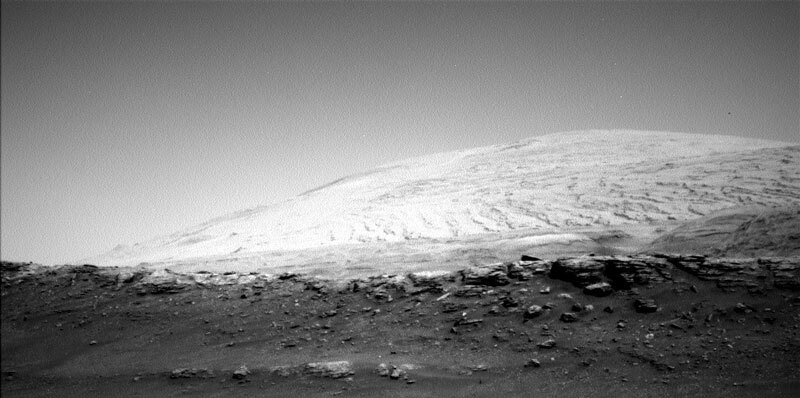2 min read

Today Curiosity continues to investigate the stair-step-like “rock benches” as the rover climbs higher up Mt. Sharp. The image above shows different types of rocks in this area: “recessive” outcrops, which seem to erode more easily (some of these are poking out of the dark, sand-covered slope towards the bottom of the image); and “resistant” outcrops, which form the harder caps at the top of the benches (these form the line of broken rock at the top of the dark slope). The difference between the recessive and resistant rock layers is what has allowed the wind to carve them into benches over the eons. But what is the root cause of these differences? Are they fundamentally different rock types, or could they be the same material that was altered in different ways after the rock formed?
To answer these questions, the team will be looking for opportunities to investigate exposures of both the recessive and resistant rocks with multiple instruments. Today, sol 2938, Curiosity will study a resistant outcrop in front of the rover at a spot called “Hart Fell” with the MAHLI and APXS instruments, and then will use ChemCam to zap two other spots called “Breabag” and “Breck.” Using Mastcam, Curiosity will capture a sweeping color panorama of the bench seen in the image above. Next, Curiosity will drive onward, to a spot where we hope to encounter a good exposure of the recessive outcrop to study later this week. Tomorrow, sol 2939, Curiosity will monitor the environmental conditions with ChemCam and will use Navcam to scan the horizon for dust devils.
And all the while, we’re keeping our eyes on the prize: the layers of brighter rocks towering in the image above. As one of the mission’s Long Term Planners, it is my job to remind the team about the big-picture strategic plan to explore Mt. Sharp. So, even amidst these enigmatic rock benches, we will continue moving expeditiously towards the sulfate-bearing unit higher up the mountain. The scenery here is stunning – but the best is yet to come!
Written by Melissa Rice, Planetary Geologist at Western Washington University







